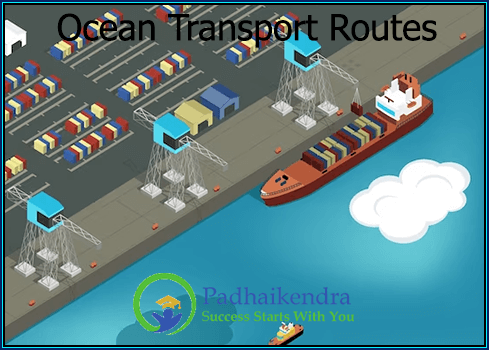Ocean transport routes refer to the established paths used by ships to travel between different ports and regions around the world. These routes are determined by a variety of factors, including geography, trade patterns, and international regulations.
Some of the major ocean transport routes include:
- Trans-Pacific Route – This route connects the major ports of Asia with the west coast of North America, and is one of the busiest shipping routes in the world.
- Suez Canal Route – The Suez Canal connects the Mediterranean Sea with the Red Sea, allowing ships to avoid the long journey around the southern tip of Africa.
- Trans-Atlantic Route – This route connects ports in North America and Europe, and is used for the transport of a wide variety of goods, including cars, machinery, and consumer goods.
- Indian Ocean Route – This route connects ports in the Middle East, India, and East Africa, and is used for the transport of oil, gas, and other commodities.
- South China Sea Route – This route connects ports in China and Southeast Asia with Australia, New Zealand, and the western Pacific.
The development of ocean transport routes has been critical to the growth of international trade and the globalization of the world economy. Today, these routes are served by a vast fleet of ships, ranging from small coastal vessels to massive container ships and oil tankers.
Efforts are being made to improve the safety and efficiency of ocean transport routes through the use of advanced technologies, such as automated navigation systems and real-time tracking and monitoring. Additionally, international regulations aimed at reducing the environmental impact of shipping are shaping the future of ocean transport routes.





